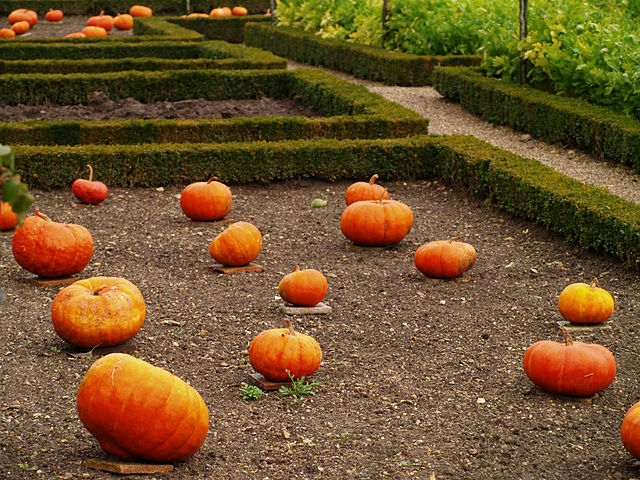My first garden memories are those of a vegetable garden at my grandparents’ house. I recall my first sowing of radishes – uneatable needless to say – or the taste of a sweet pea or that of a beautiful raspberry. It is funny that my grandmother was suspecting birds were responsible for this year poor harvest…
This is also the first type of garden I have restarted working on. I was motivated by the great aim of producing my own vegetables, from heirloom varieties and with an organic cultural mode. This served also as a therapy next to an intellectual and abstract doctoral work.
Despite all these positive memories, I will not advise most of my clients to consider a vegetable garden in part of their garden. I do not know any kind of garden feature that requires more maintenance. If one cannot maintain it oneself, one is bound to produce the most expensive salads on earth. Indeed, a vegetable garden is a constant restart: sowing ahead, hoeing, controlling an invasion of slugs… It requires constant attention.
However, I do suggest the realization of “faux potagers”. Those evoke a vegetable garden by respecting a strict alignment of plants. The later are however far from the ubiquitous carrots and salads. One the one hand, I favor perennial berries and vegetables, such as black and red currants, raspberries, but also cardoons, artichokes, green asparagus or sea hollies. Famous in England but almost unknown elsewhere, one eats young shoots of the later in spring, like an asparagus, after they have been blanched by placing a terracotta pots on top of the plant at the end of winter.
On the other hand, I substitute most vegetables with flowers, to create a cut-flower garden. What a joy to garnish the house without depleting the garden borders! Those are planted in strict lines again and the choice is vast. It could be easy annuals, such as Amni majus and Centaurea cyanus or spring bulbs too baroque to be planted in a border but that will be sensational in a flower arrangement, like parrot tulips. I mostly plant perennials typical of cottage gardens, like Chinese peonies. I also believe this is the ideal place for spring flowering shrubs that offer little interest the rest of the year: forshythia, lilas, philadelphus or weigelia. In this case, the shrub development is strictly controlled by a severe regime of pruning. It favors the production of straight shoots bearing flower at their tip, ideal for posies. This intervention should be done right after flowering.
A last advice: to reduce considerably the chore of weeding, it is of great importance to cover any area of bare earth, which is just an invitation for weeds to settle. This can be achieved by a thick layer of mulch or by growing robust ground cover under shrubs. The garden hence remains a pleasure.


Recent Comments